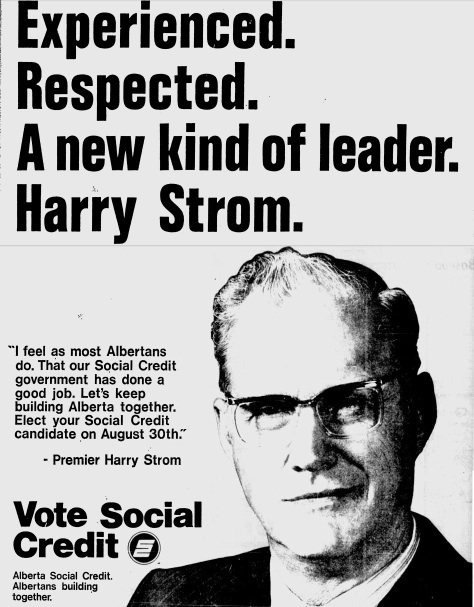Tout le monde political Alberta is abuzz with rumours of new private polls that show a significant shift of voter support away from the Progressive Conservative government of Alison Redford toward the Opposition Wildrose Party and, to a lesser extent, to the Alberta NDP and Liberals.
The polls, said to have been done for political clients and not shared with the public, differ slightly from one another but illuminate movement that, if it continues until the expected provincial election in the spring of 2016, would finally bring an end to the Conservative dynasty founded by Peter Lougheed in 1971.
Indeed, according to some cursory number crunching, the change would result in a significant majority for the Wildrose Party and reduce the Redford PCs to a rump a little smaller than what was left of the Social Credit party in 1971. The Socreds survived the election that brought Lougheed to power with 25 seats.
The most recent of the polls are said to suggest Wildrose support would be very close to 40 per cent, Tory support well under 30 per cent, with NDP and Liberal support comfortably back in their traditional range.
With NDP support concentrated in the Edmonton area and the other parties’ voters spread more evenly across the province, this would mean the parties most likely to profit dramatically from this situation would be the Wildrose and the New Democrats, although with numbers in this range the PCs would still emerge as the Opposition party.
But since the PCs have no purpose except to be the government of Alberta and no discernable principles beyond the principle of power, it is likely the party would soon crumble faced with such a situation — quickly to be absorbed by the Wildrose Party.
At that point, the reverse takeover of the right by the further right in Alberta will be complete and, it is predicted here, premier Danielle Smith would soon call a party convention to rename the organization the Conservative Party of Alberta, amputating the Progressive bit like a gangrenous limb.
Either that, or they’ll call it the Social Credit League — which, some might argue, would be closer to the truth.
Regardless, when this happens, remember where you heard it first!
Getting back to the matter at hand, the confidential polls were apparently taken before the worst of the Redford Government’s attacks on public sector unions — whose members, arguably, shored up the Redford PCs against the Wildrose challenge in the 2012 general election. So it is not known what impact, if any, this policy change is having on the government’s ability to recreate its winning coalition, although it is argued here it unlikely to be positive.
The pre-December confidential polls suggest “temporary Tories” abandoned the government soon after the 2012 election, and Wildrose support grew even more after the 2013 Tory budget was brought down. This resulted in slippage in Tory support in the order of 15 per cent.
They also show that both the Wildrose Party and NDP have so far been able to hang onto their support bases.
The polls also indicate Wildrose support is strong in all regions of the province, with the NDP doing very well, marginally ahead of the Wildrose, in the Edmonton region. Interestingly, the Wildrose does very well in rural and southern areas where they elected members in the 2012 election — so it would seem the party’s approach in opposition is not turning off voters who were inclined to support it last time.
The results also show the Wildrose leading strongly among all age groups and demographic divisions of voters with the sole exception of women over 55, who narrowly support the Redford PCs over the Wildrose Party.
Well, as Britain’s Labour prime minister Harold Wilson accurately observed back in the 1960s, a week is a long time in politics — so we can safely assume that two years is close to an eternity.
Still, results like these must leave many Progressive Conservative MLAs, who are certainly aware of them and perhaps other polls of their own as well, feeling queasy and concerned. As well they should be!
More pollsters are bound to be in the field soon, including some who do their work in public, so we should all have the opportunity soon to see if these rumoured results approximate reality, and if that reality indicates a meaningful trend that’s about to bring us back to the future.
On the other hand, maybe it’s just more pollsters blundering in the darkness, as appears to have happened back in the spring of 2012.
This post also appears on David Climenhaga’s blog, Alberta Diary.



